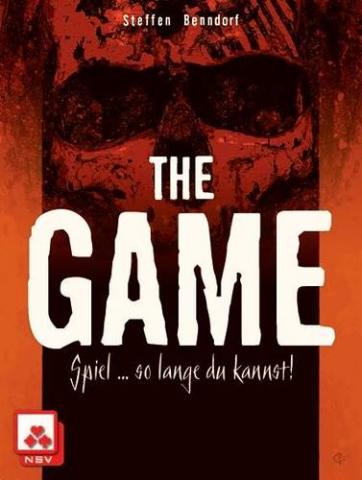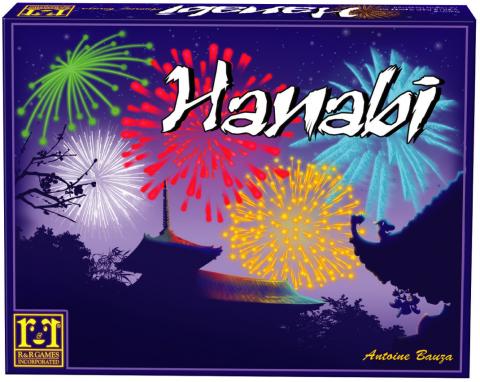THE GAME and HANABI
A review by Parker Banks
This is a dual review about The Game and Hanabi. Both of these games are card based, coop games that require all of the players to work together in order to play cards sequentially, hence the dual review. Both games can also be played in 20 minutes or less. 2-5 players can enjoy a game of Hanabi together while The Game can actually be played in a solo variant, so it accompanies 1-5 players. Hanabi is published by R&R Games and The Game is published by NSV.
Recommended for:
Both of these games are recommended for players who enjoy co-op games and games that do not have very strong themes. These are both games light, quick games where the only thing that really matters is the number on your card. Both of these are also excellent for anyone who claims that they can read minds. That would be a very helpful trait for these games.
Gameplay
In The Game, players are trying to play cards ranging from 2-99 on top of four different stacks. A player will play cards on top of any of the stacks in the middle of the table (the number of cards depends on the how difficult you want to make the game), draws cards to refill their hand, and then play passes to the next player. As I mentioned, there are four stacks in the middle of the players, two stacks where cards are played in ascending order from 1 to 100 and two where cards are played descending from 100 to 1.
In Hanabi, players are trying to get stacks of 1-5 for each of the 5 colors. Players have three options on each of their turns: 1. give a clue, 2. discard a card you don’t want in order to draw a new one, and 3. play a card on a stack. What makes Hanabi a special game is the fact that you actually hold your cards facing everyone else. This means that you are never allowed to look and see what cards you have, but you know what everyone else has at any given time. Another reason this game might not be as easy as it sounds at first is that there are limits to how many clues you can give. Every time a player gives a clue it can only be to one other player and about only one of their cards. Also, there are counters in the middle of the table that show how many clues can be given without having to discard another card. Every time a clue is given, one counter is removed and every time a card is discarded from a players hand, one counter is re-added.
Obviously, these are not all of the rules for either game, but they do help to show that the real fun, and frustration, of both of these games is the lack of knowledge. In The Game, you don’t know what everyone else has and trying to figure out ways to make sure nobody plays on a stack that you need for one of your cards, while in Hanabi you struggle how to tell everybody else what cards they have while also trying to figure out what the heck is in your own hand! This is why reading minds would be such an advantageous super power to have.
Components
Neither one of these games have a lot of components. The Game provides you with just cards and a rule sheet and Hanabi gives you less cards, but some counters along with the rules. The rules for both of these games are very easy to read and can be read in less than 10 minutes. Both games also allow for some slight variations in gameplay to mix up the games a little (The Game suggests mixing up how many cards you play in a turn while Hanabi gives you a set of “wild” cards that can either make the game slightly easier or more difficult in you make them a sixth color by themself). The card stock for both games is adequate are easy to read.
Price
You can pick up a copy of the game for around $12-15 and Hanabi for around $10. There is a deluxe version of Hanabi, that uses tiles instead of cards, and it runs around $35.
General Impressions
Both of these games are very easy to teach new players, even people who do not normally play games, and can be lots of fun considering how much they cost and how time in takes to play a game. It is possible to develop a “language” to the game that makes both of these games robotic and there is a lot of room for interpretation in what exact wording for the clues in both games is excerptible. For example, in The Game, I know that I cannot tell you exactly what card I have, but if there is a 27 on the stack and I have the 22 I can easily just say that my card is 5…ish away from 27. And in Hanabi, any time a clue is given about a single card or a certain wording or emphasis is put on, that just play “Play this card right now”. Long story short, it would be hard to convince me that you could play either of these games a lot with the same group of people and not get bored or start acting against the “spirit of the game”.
I have played both of these games with just my wife and I they do both seem to work just fine with two players. However, it is possible to get in a cycle in Hanabi where one player just gives a clue every turn and the other players just plays or discards a card every turn.
All in all, both of these games are quick, easy, and definitely entertaining, at least for a little while and might be worth checking out. I would say that I personally prefer The Game because of the “when I say this I mean play this card” that is possible in Hanabi.


